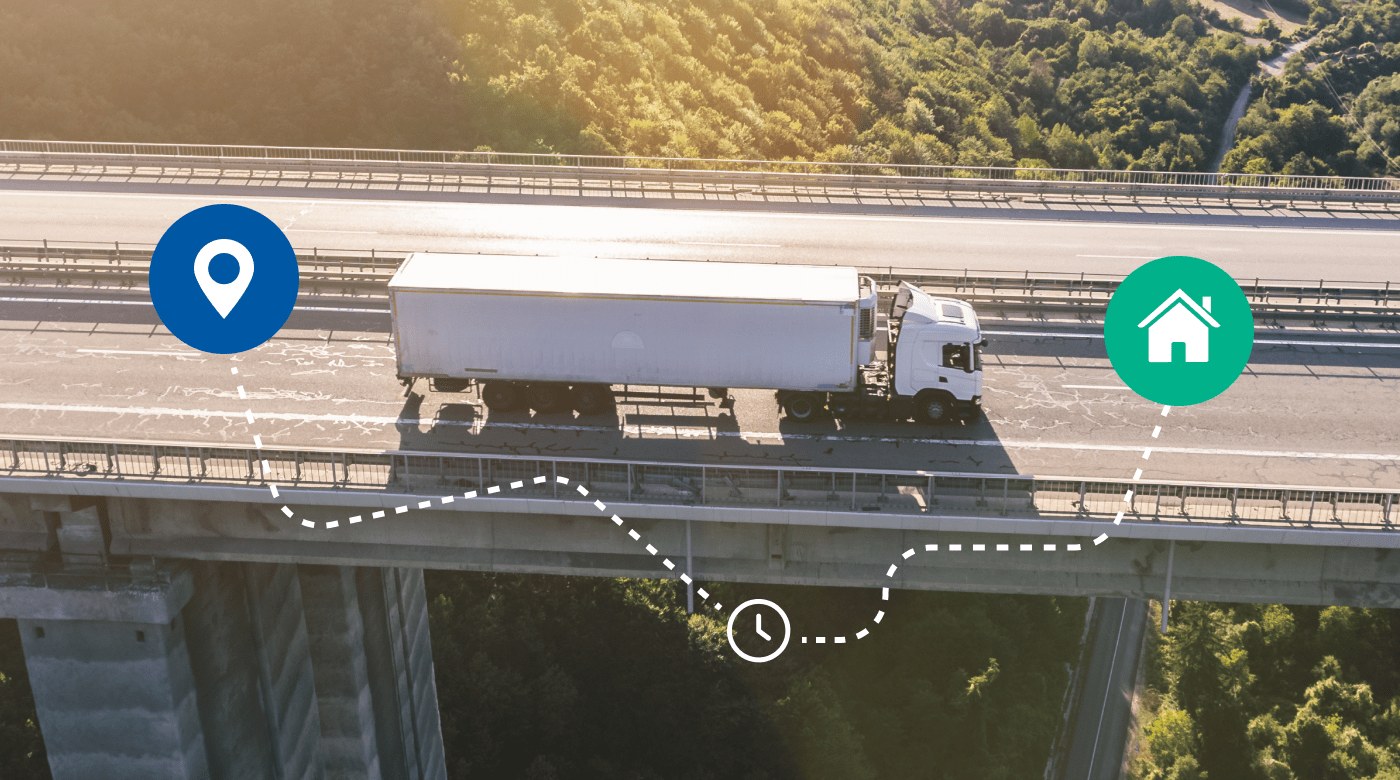According to a survey by HERE Technologies, “Customers could leave a favorite brand on the basis of a costly or poor delivery experience.”
In this respect, it’s vital that you offer a streamlined final mile delivery solution that’s both affordable and effective. Most customers simply won’t put up with late deliveries, expensive shipping, or poor communication.
Here’s a guide to help futureproof your final mile process by improving delivery convenience for customers.
What’s final mile delivery?
Also known as “last mile delivery” or “last mile logistics,” final mile delivery refers to the last leg of the supply chain where the goods move from the retailer to the customer.
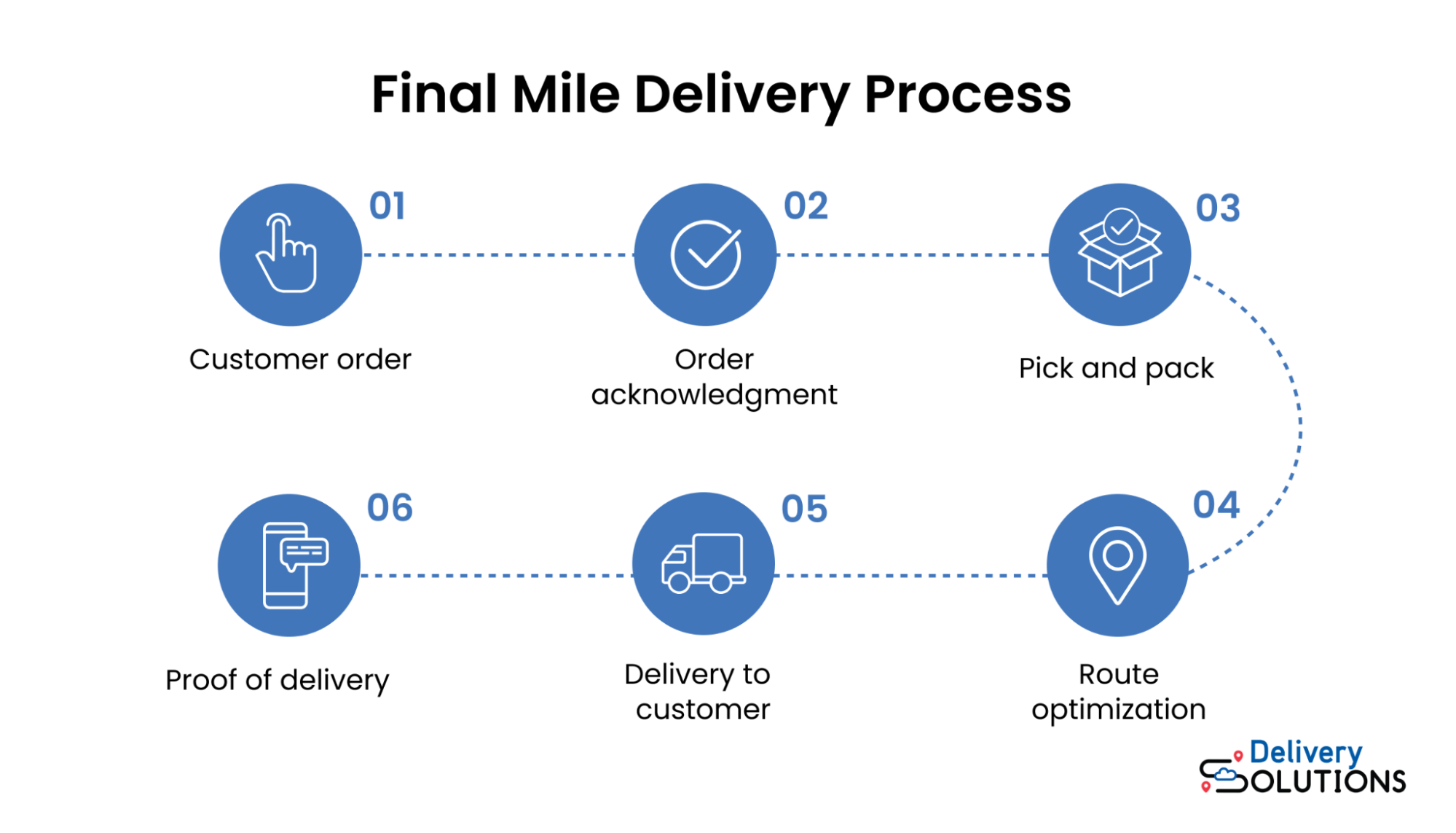
This journey often looks something like this:
- Customers place orders.
- The distribution center or warehouse recognizes and acknowledges these orders.
- A warehouse worker picks each order and packs the delivery vehicles.
- Delivery systems calculate and optimize the best route to reach the delivery addresses.
- A delivery driver delivers the goods to each customer’s door or pickup point.
- The customers receive proof of delivery.
Major frictions in the final mile process
While the key to customer satisfaction lies in a high-quality delivery experience, companies face the ever-looming threat of expensive final mile services.
Not only do customers want customized final mile services and speedy drop-offs, but they also want affordable delivery and end-to-end visibility. Companies that can’t keep up with these demands will lose customers to companies that can.
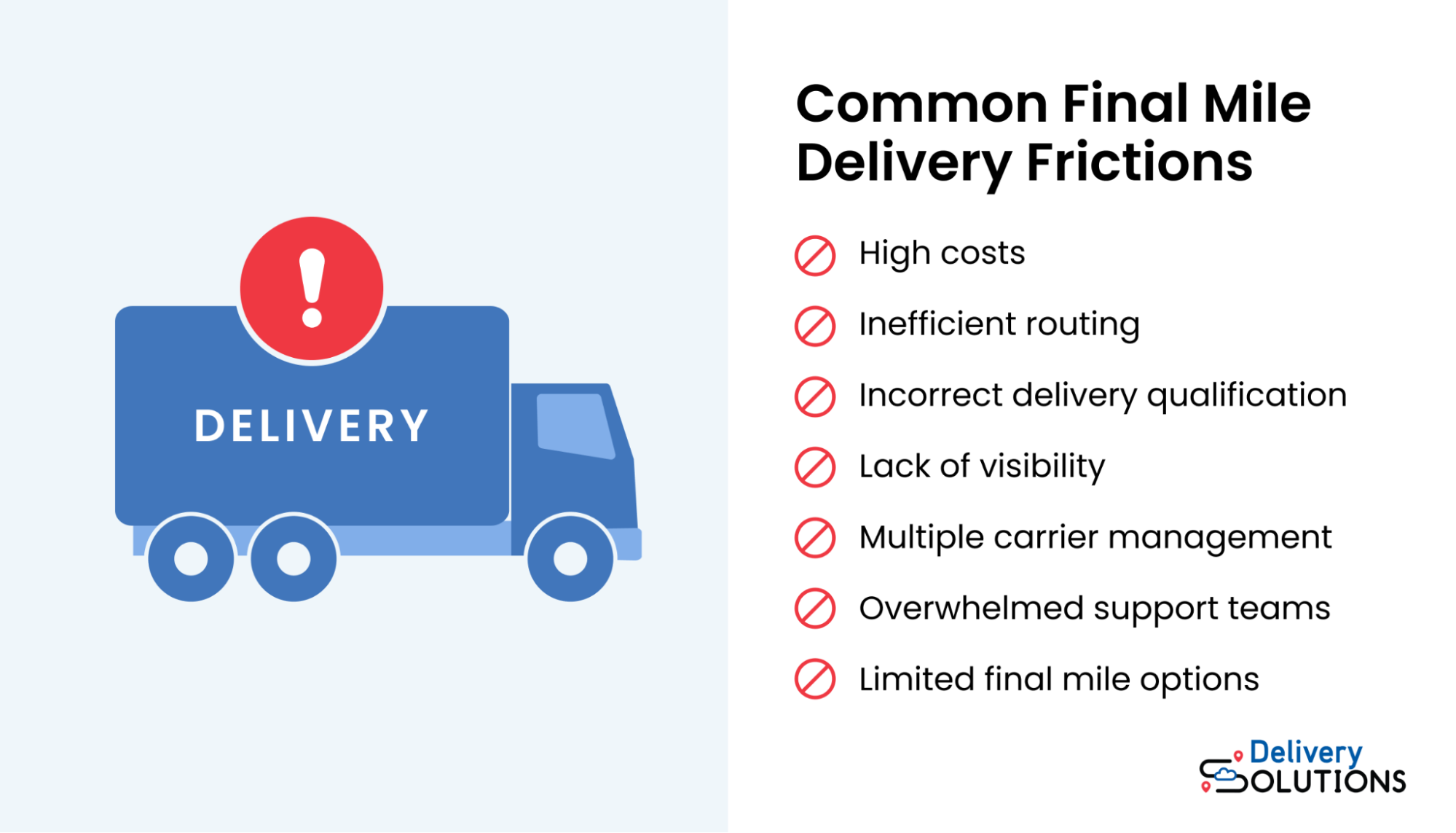
Here are some of the main frictions that threaten customer satisfaction and make it tough to offer a seamless final mile delivery operation:
- High costs. In the first and middle mile stages of delivery, high volumes of goods are all transported to the same location, such as a distribution center. As these products can be delivered together, this saves on costs.
In the final mile, each order heads to a different delivery address. This can cost anywhere between $1.40–$12.00 per package. While it would make sense to pass these costs down to the customer, 61% of buyers claim they’d rather switch providers than pay for an expensive delivery fee. This means companies have to swallow the cost of shipping or risk losing customers.
- Inefficient route planning. If you don’t have dynamic routing technology to help you plan efficient truck routes, your dispatch vehicles may end up taking longer journeys than necessary. As a result, deliveries take longer and you’ll pay more in fuel costs.
- Incorrect delivery qualification. Before offering your customers same-day delivery services, you need a system that determines whether the buyer is in range. If a customer is too far away, you’ll experience many failed deliveries. A poor delivery success rate leads to low customer satisfaction.
- Lack of visibility. Shipping delays are common especially in recent years due to the pandemic. However, 94% of customers expect companies to notify them of any delays. End-to-end tracking helps customers see delays in real time and reschedule if required. As a result, you’ll lower the number of failed deliveries.
- Multiple carrier management. If you’re trying to juggle lots of dispatch companies at once, you need a technology that will allow you to coordinate these carriers. Trying to do this manually is time-consuming, costly, and error-prone.
- Overwhelmed support teams. 60% of customer service reps believe it’s harder than ever to resolve customer issues. Without a scalable solution to manage customer support needs, agents will be overrun by constant calls about deliveries.
- Limited final mile options. Last mile delivery is expensive. Some customers may be happy to use other options to receive their goods. Alternative solutions, such as “buy online, pickup anywhere” (BOPA), “buy online, pickup in store” (BOPIS), or curbside delivery, can help relieve the pressure and expense of final mile delivery.
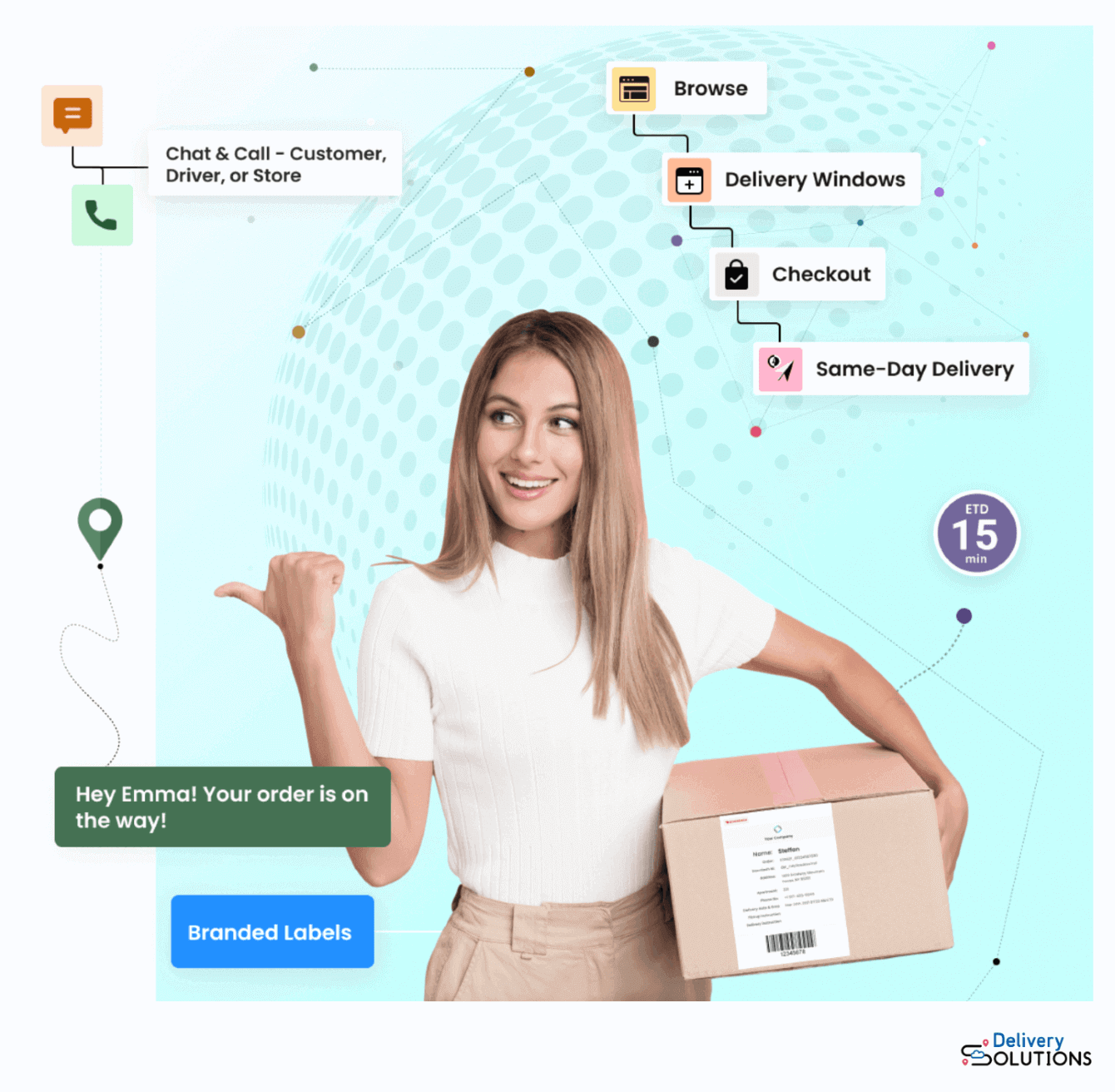
To overcome these final mile frictions, you need an end-to-end solution like Delivery Solutions. Not only will software like this help you manage your whole delivery operation, from same-day delivery to BOPA, but it’ll also make handling customer support requests easier.
9 ways to futureproof final mile delivery convenience
Consumer satisfaction hinges on the last mile dispatch process. Failed or late deliveries, expensive shipping fees, and poor customer service simply won’t cut it.
Here’s how you can offer flexible delivery solutions that keep customers happy as delivery demands scale.
1. Check eligibility and streamline logistics to lower delivery costs
Customers don’t want to pay pricey shipping fees, but inefficient delivery routing can lead to high distribution expenses. While you can pass these costs down to your customers by charging them higher shipping fees, this isn’t advisable.
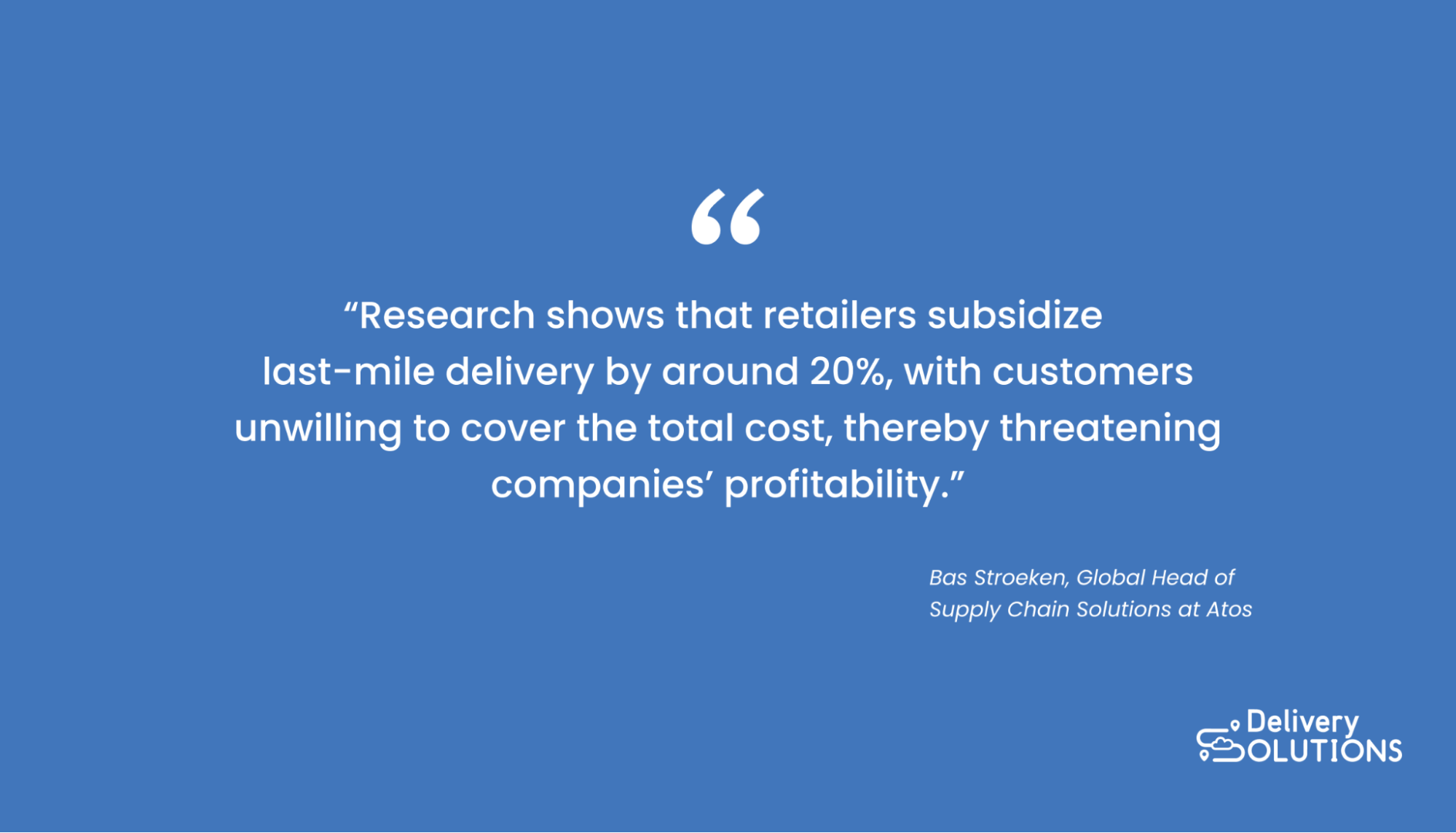
As Bas Stroeken, Global Head of Supply Chain Solutions at Atos, explains, “Research shows that retailers subsidize last-mile delivery by around 20%, with customers unwilling to cover the total cost, thereby threatening companies’ profitability.”
To keep shipping costs low and prevent failed deliveries, you need effective routing technology.
These systems should first check customer eligibility. If a buyer chooses same-delivery delivery and they’re out of range, you risk a disgruntled customer and a negative review when their delivery doesn’t arrive on time.
Your routing technology should also optimize deliveries so that drivers take the shortest and most efficient routes between delivery addresses. Otherwise, you’ll end up shelling out more for fuel, and you’ll have higher staffing costs to cover the extra time it takes to make deliveries.
2. Manage multiple carriers more effectively
If you’re using multiple carriers to deliver customer orders, you’ll need a system that helps you manage these companies effectively. You can choose a system that picks the best carrier for each delivery based on the location and the types of goods being delivered.
It’s not just assignments that you have to worry about. You’ll need a way to communicate with these companies and their drivers while the drivers are on the go in case they need to update you on changes or inform you about delays.
Trying to do this manually can be a real headache, as you have to rely on human judgment for assigning deliveries, leaving lots of room for error. Plus, delivery drivers may want to communicate on different apps, making it easy to miss messages or mix up cases.
A full-service omnichannel tool like Delivery Solutions can help you manage and communicate with multiple carriers all in one place.
3. Provide real-time tracking for customers
The quickest way to improve your final mile customer service is to offer real-time order tracking.
![]()
While customers may choose a delivery window, unexpected delays can mean that orders don’t come on time. If a customer takes the morning off work for a delivery but heavy traffic delays the order until the afternoon, they’ll be unhappy if they aren’t informed about the delay.
With real-time tracking, they can see the delay and reschedule the delivery instead of missing it altogether by returning to work in the afternoon.
Not only does increased visibility improve transparency and enhance the customer experience, but it also helps to prevent the costs of failed deliveries that occur when customers can’t wait at home any longer for a delayed package.
4. Offer alternative final mile options, like BOPA
Last mile services are expensive. So why not look for ways to cut out this process and provide a more convenient option for customers?
For some buyers, BOPIS, BOPA, and curbside pickup are more favorable alternatives since they allow customers to collect their goods from a location that suits them.
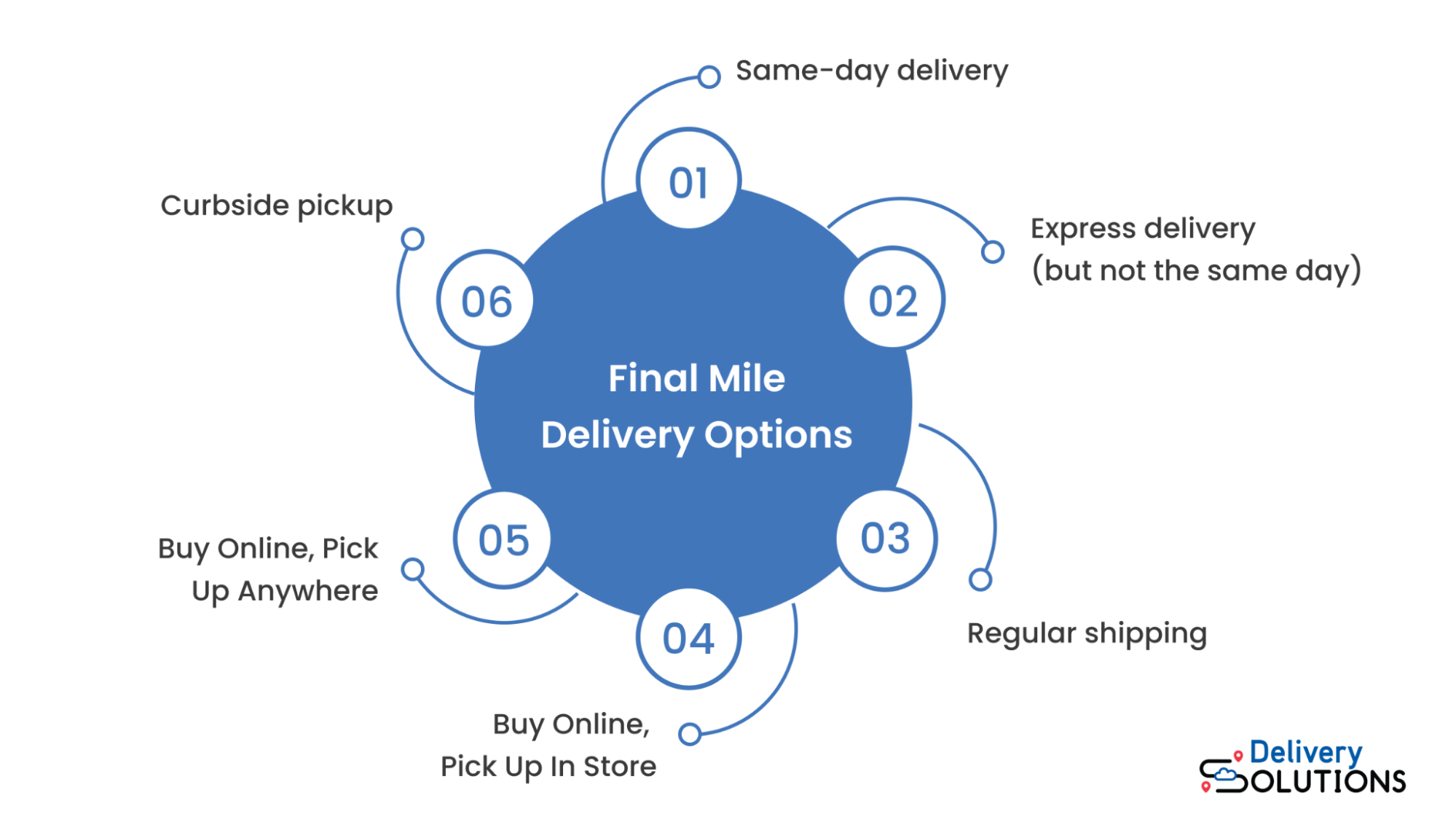
For example, with BOPIS, a customer who wants to save on delivery costs can collect their goods during their lunch break from a store that’s close to their workplace.
Alternatively, someone may want to buy something online to take on a trip and would rather collect it from a locker near where they’re vacationing than try to pack it in their suitcase.
5. Improve communication with customers throughout the experience
Today’s buyers want continuous conversation when they purchase something, with 83% saying that they expect regular communication about their deliveries.
Not only should customers have access to real-time tracking, but they should also receive regular notifications on the progress of their delivery via email, SMS, or an app.
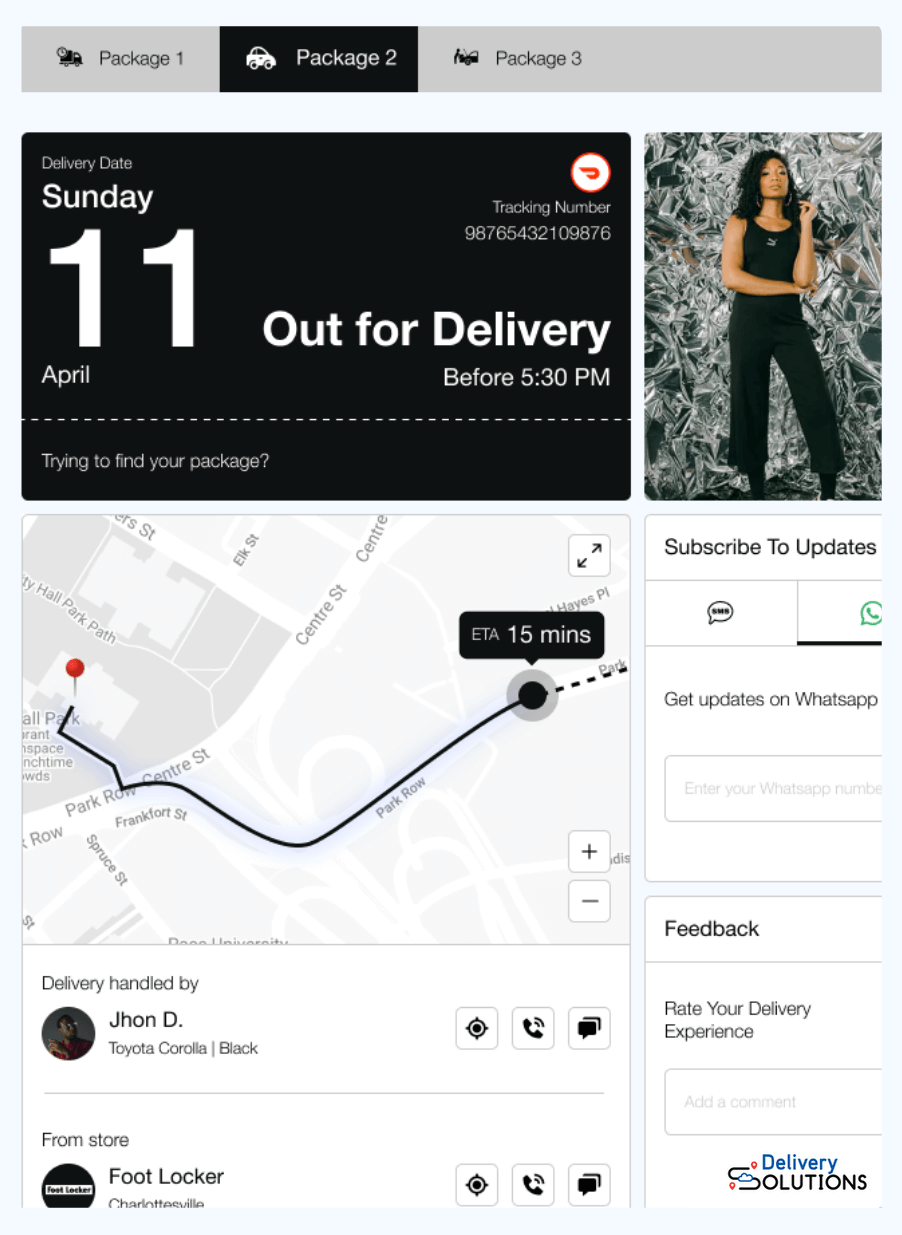
On top of this, companies need a seamless method to communicate changes.
During the last mile process, customers, retailers, and drivers need to use three-way communication so that everyone is kept updated about the orders.
In some cases, all three parties need to communicate, whereas, in others, only two of the three need to contact each other.
For example, if a delivery driver hits heavy congestion, they’ll need to alert both the store and the customer.
However, if there are problems with order fulfillment, it’s the retailer — not the delivery driver — that needs to contact the customer beforehand.
You’ll need a communication software like Delivery Solutions that’s flexible enough to provide these capabilities.
6. Provide delivery-specific support
If you don’t provide delivery-specific channels through which customers can access support, they’ll jam up your general support channels.
This will cause long wait times for buyers looking for help with non-delivery-related issues, resulting in a poor customer service reputation. It may also mean that customers don’t get the help they need before their delivery is scheduled to arrive.
Accessible delivery support options, such as the live chat and SMS channels offered by Delivery Solutions, are scalable support mechanisms that make it easy for customers to communicate with you about their deliveries.
7. Facilitate rescheduling of deliveries
Customers can’t always make delivery windows, so they need a simple way to change these delivery times themselves. Otherwise, they’ll overwhelm support channels with these requests.
With a tool like Delivery Solutions, customers can easily switch to a different delivery time without the input of a human customer service agent.
8. Use post-delivery communication to verify deliveries
Post-delivery verification doesn’t just serve as proof of delivery. It also rounds off the customer journey by letting buyers know their delivery was successful.
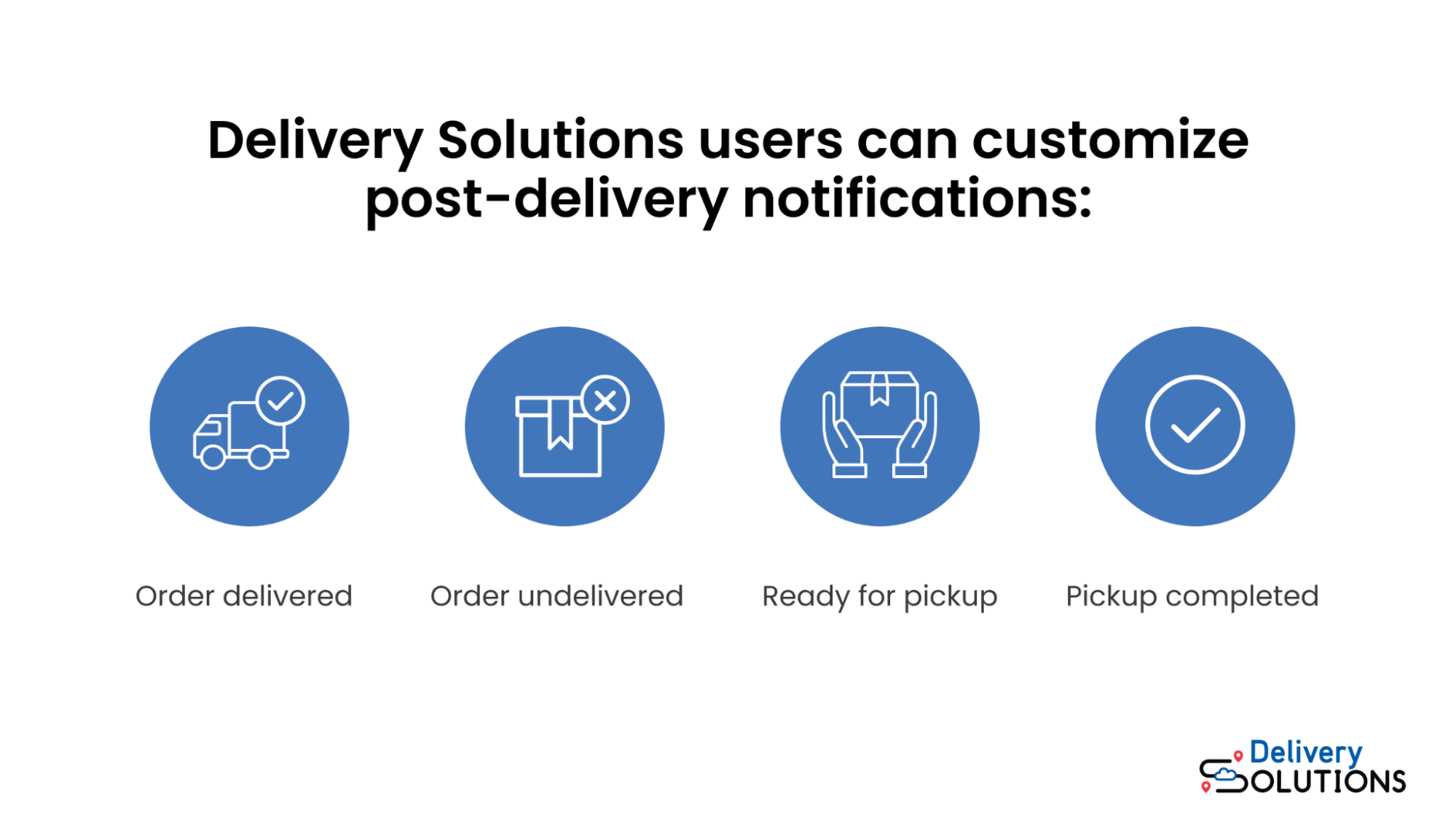
With post-delivery communication, you have a failsafe in the case that a customer fraudulently claims their package hasn’t arrived and a confirmation for customers who aren’t home.
With a tool like Delivery Solutions, you can customize post-delivery SMS notifications to match your brand voice.
9. Leverage analytics to improve future delivery services
Journey orchestration technology like Delivery Solutions doesn’t just help you provide end-to-end customer service for deliveries. It also analyzes data to help you improve the customer journey.
You can use your analytics dashboard to highlight common delivery issues with particular carriers, certain geographical areas, or specific types of orders. That way, you can redesign your delivery solutions to overcome these bottlenecks.
You can also use software of this nature to flag problematic customers, such as those who constantly reschedule deliveries or those who typically aren’t there to sign for their packages.
By analyzing the patterns in your delivery data, you can weed out troublesome buyers and optimize your process for faster, more cost-effective final mile solutions.
Conclusion
The future of final mile delivery relies on customer convenience. If your customers feel that your delivery process is expensive and clunky, they’ll choose another provider.
Streamline your final mile journey with Delivery Solutions, the omnichannel SaaS solution that facilitates efficient last mile services for you and your customers. Schedule a demo today.
Delivery Solutions orchestrates fulfillment experiences for enterprise retailers, supplying flexible optionality for consumers and priming merchants for innovation at scale.
Ryan Caldarone
Ryan is a Sr. Digital Marketing Manager with over ten years of experience in B2B eCommerce, specializing in brand storytelling and content. Having contributed to hundreds of creative projects for SMBs and startups across the tech, energy, and fine arts sectors, Ryan brings diverse perspectives.
Topics from this blog: Delivery On-time Improvement
